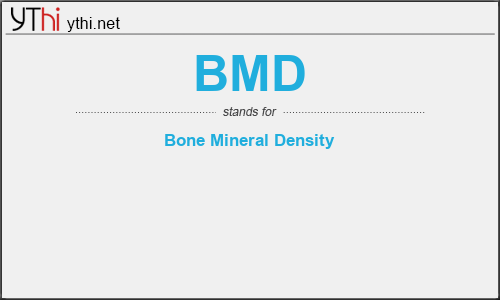What does BMD mean? What is the full form of BMD?
The full form of BMD is Bone Mineral Density.
A bone mineral density test, sometimes just called a bone density test, detects whether you have osteoporosis, a word that comes from Greek and literally means “porous bone.”
When you have this condition, your bones get weak and thin. They become more likely to break. It’s a silent condition, which means you don’t feel any symptoms. Without a bone density test, you may not realize you have osteoporosis until you break a bone.
How the Test Works
The bone density test is painless and quick. It estimates how dense or thick your bones are by using X-rays.
The X-rays measure how much calcium and minerals are in a part of your bone. The more minerals you have, the better. That means your bones are stronger, denser, and less likely to break. The lower your mineral content, the greater your chance of breaking a bone in a fall.
A bone mineral density (BMD) test is can provide a snapshot of your bone health. The test can identify osteoporosis, determine your risk for fractures (broken bones), and measure your response to osteoporosis treatment. The most commonly used BMD test is called a central dual-energy x-ray absorptiometry, or central DXA test. It is painless – a bit like having an x-ray. The test can measure bone density at your hip and lumbar spine.
Peripheral bone density tests measure bone density in the lower arm, wrist, finger or heel. These tests are often used for screening purposes and can help identify people who might benefit from follow-up bone density testing at the hip and lumbar spine.
What does the test do?
A BMD test measures your bone mineral density and compares it to that of an established norm or standard to give you a score. Although no bone density test is 100-percent accurate, the BMD test is an important predictor of whether a person will have a fracture in the future.
The T-score
Most commonly, your BMD test results are compared to the bone mineral density of a healthy young adult, and you are given a T-score. A score of 0 means your BMD is equal to the norm for a healthy young adult. Differences between your BMD and that of the healthy young adult norm are measured in units called standard deviations (SDs). The more standard deviations below 0, indicated as negative numbers, the lower your BMD and the higher your risk of fracture.
As shown in the table below, a T-score between +1 and −1 is considered normal or healthy. A T-score between −1 and −2.5 indicates that you have low bone mass, although not low enough to be diagnosed with osteoporosis. A T-score of −2.5 or lower indicates that you have osteoporosis. The greater the negative number, the more severe the osteoporosis.
BMD
means
Bone Mineral Density![]()
Translate Bone Mineral Density to other language.


Leave a Reply
You must be logged in to post a comment.